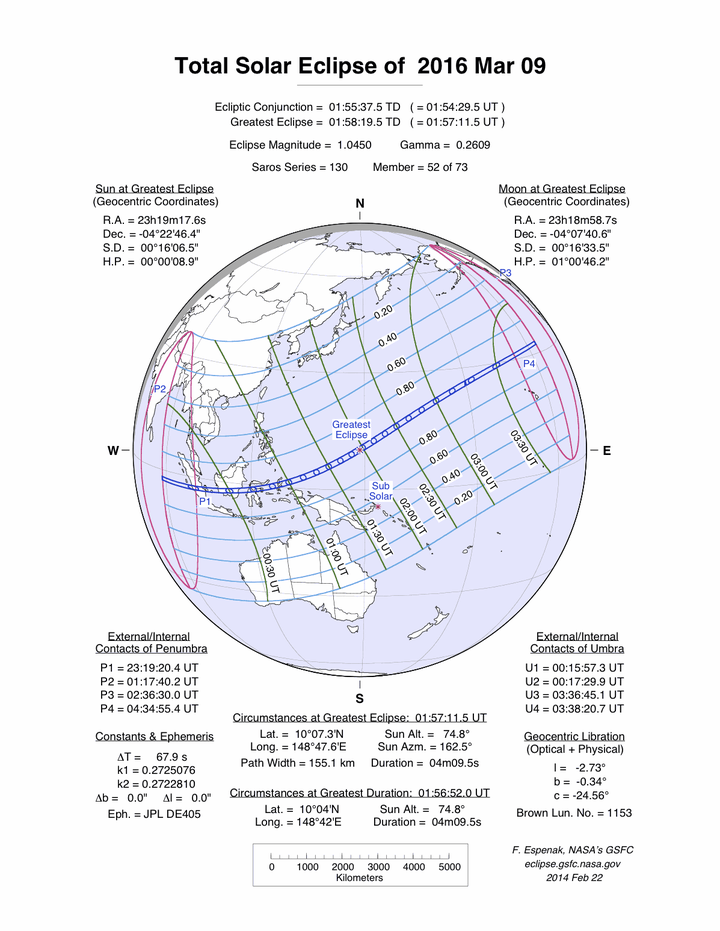For some, the sky is about to turn very dark. The next total solar eclipse takes place between Tuesday, Mar. 8 and Wednesday, Mar. 9.
Light will be blocked out as the moon passes between the Earth and the sun, but the eclipse will only be visible in totality from parts of southeast Asia.
NASA has released this animation to reveal exactly where and at what time the shadow will pass:
It will begin shortly after 6 p.m. EST over Indonesia and travel northeastwards for more than three hours over Borneo and out over the Pacific Ocean.
"Though only people along the narrow path of totality will see the total eclipse, millions more will see some degree of a partial solar eclipse in Asia and the Pacific, including Hawaii, Guam and parts of Alaska," NASA said in a statement.
"A partial eclipse will also be visible along the path of totality for over an hour before and after the total eclipse." The space agency has also created this stunning visual to illustrate the path it will take:
According to NASA, total solar eclipses occur only about once a year because the moon and the sun don't orbit in the exact same plane.
Space scientist Sarah Jaeggli, from NASA's Goddard Space Flight Center in Greenbelt, Maryland, said surroundings take on "a twilight cast" during the celestial phenomenon.
"The moon blocks the light of the sun's surface very, very precisely," said Jaeggli, who's seen two total solar eclipses. "You can see all the way down to the roots of the corona, where the atmosphere meets the sun's surface."

The total solar eclipse will last at each location for anything from 90 seconds to 4 minutes. It will cover 8,800 miles in length and at its widest point be some 97 miles across.
NASA warned people viewing the eclipse not to look directly at the sun.
"Eclipses can be viewed using a solar-filtered telescope, eclipse glasses, or a pinhole projector," the space agency said. "Even when 99 percent of the sun's surface is obscured by the moon, the unobscured sliver of the sun's surface can damage the eyes."
Skywatchers across Northern Europe and parts of Asia and Africa were treated to a total solar eclipse in March 2015. The next total solar eclipse after this month will be a coast-to-coast shadow across the U.S. on Aug 21, 2017. Here's where it will cross:
The Slooh community observatory will broadcast this next eclipse live from Indonesia via its website here.
